
Lesson Ideas and Activities
Walk To School This May With Pentagon Play!
We are supporting National Walk to School Week, which takes place 20-24 May 2024. It’s a campaign set up by Living Streets UK, the charity for everyday walking.
Like every year, Walk to School Week takes place during National Walking Month, the charity’s annual festival of walking under the slogan #MagicOfWalking.
The idea behind the Walk to School Week campaign is to promote Living Streets UK’s ambition that every child that can, walks to school.
They explain that a generation ago, 70% of us walked to school, but now it’s less than half. They want to reverse this decline.
They want children to be energised and empowered, so that walking to school is their natural choice.
We couldn’t agree more! With childhood obesity dubbed a major national health concern in the UK by the NHS, and the noticeable increase in pollution from vehicle fumes causing serious problems for little lungs, walking to school on a regular basis could make all the difference for the future health of children around the UK.
The Living Streets UK Website has loads of information as to how schools across the UK can get involved.
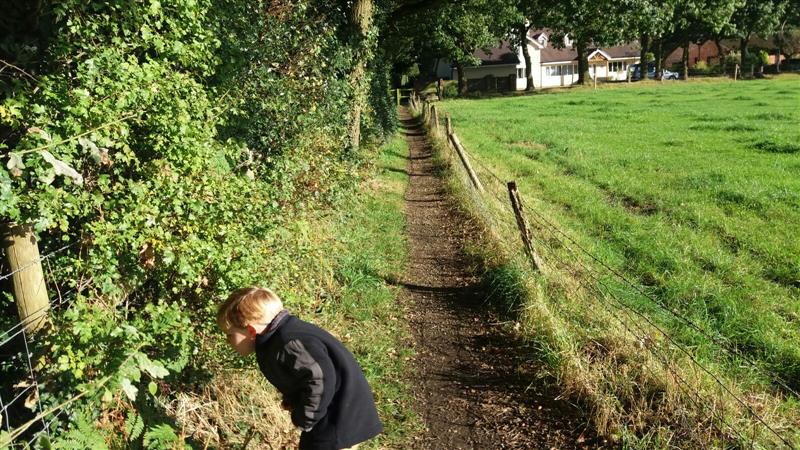
School children can take part in their Magical Five-Day Walking Challenge. They are encouraged to travel actively to school each day, meeting various magical beings along the way, whilst learning about the benefits of walking for individuals. communities and the planet.
Here are our top 7 tips to support National Walk To School Week and discover the #MagicOfWalking
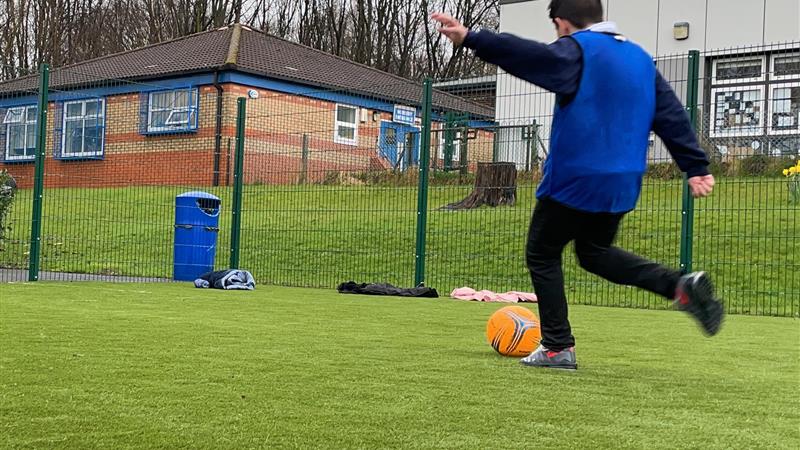
Perfect Timing
If your school hasn’t been involved with a walk to school campaign before, then May is the perfect time to start straight away.
It’s a beautiful time of year as the air is getting warmer, the blossom is in full bloom, bright green leaves have just returned to the trees and the birds are singing along the way (well some of the time anyway!).
It’s a wonderful month that opens our eyes and lifts our spirits, helping children to arrive into school with a spring in their step and ready for the day ahead.
Getting Everyone On Board
Do your pupils and parents understand the academic and developmental impact of walking to school?
Now’s the time to tell them and get them on board!
They may be interested to learn that the government’s National Travel Survey looked into how children travel to school and the effect that this has on them. Around 90% of teachers reported that their pupils are more ready to learn if they have walked into school.
They arrive brighter and more alert for their morning classes.
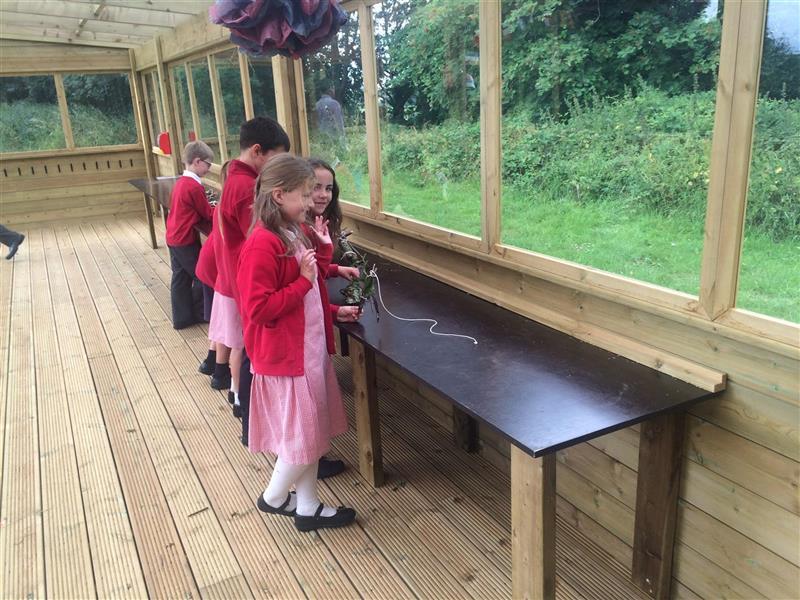
Gentle walking as a form of exercise not only improves their physical health and fitness, but can help make children feel calmer and happier and so improve their levels of concentration, so that they are better able to focus in school.
It’s also an opportunity for parents/carers to chat with their children in a relaxed way, building up their self-esteem and overall well-being.
Put together, this makes a hugely positive contribution towards children’s overall performance.
This information alone is enough to convince most people to make the switch to walking!
Set Up a Walking Bus
Walking Buses are popular in many schools. It’s a great way of joining together and helping everyone to walk most, if not all, of the way to school.
The idea is that the walking bus is run by a rota of parents/carers so that responsibility and time is shared. This is great where parents have to get to work by a certain time and might usually struggle to fit in the walk every day.
Children meet at a pre-agreed drop off point and walk the rest of the way to school together, supervised by rotating parents/carers.
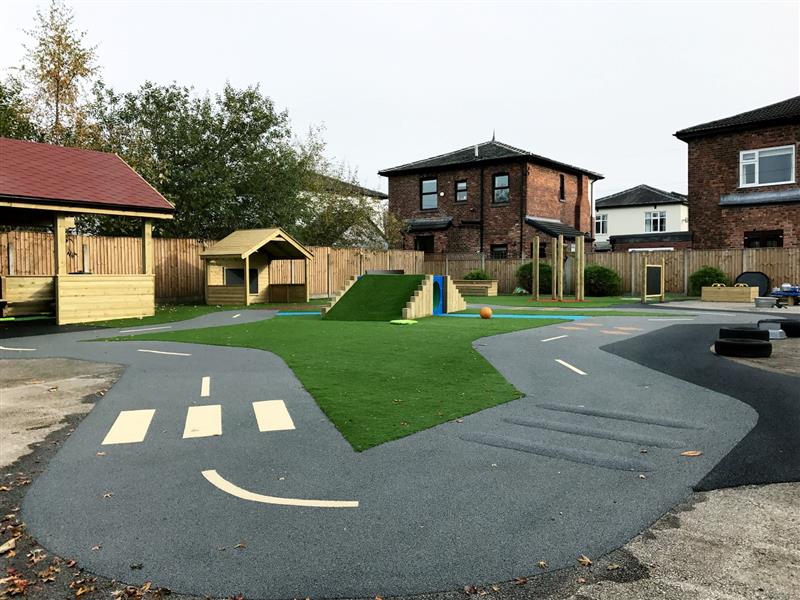
Everyone gets to know each other, make friends and enjoy the walk together.
Children learn about road safety, how to be responsible when crossing the roads and observing their surroundings, and learn some independence.
Carbon footprints are reduced (only muddy footprints here!) as there are fewer fumes from rush hour traffic. Busy parents get to share out the daily school run.
It’s a win win situation for everyone!
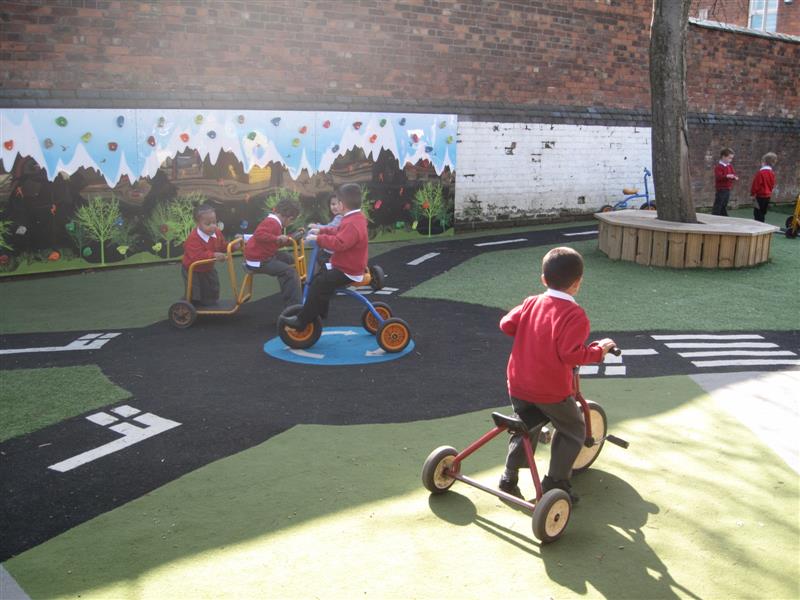
Walker Friendly School Grounds
There are always going to be days when there just isn’t time to walk to school amid the morning rush.
For those days, scooting and cycling is just as brilliant and serves the same purpose as walking, only it’s a little faster! The challenge is a practical one - what to do with all those wheels once they get to school?
And then there is the Great British Rain. Does anyone really enjoy walking to school in a downpour? These are the days that everyone jumps in the car, roads become congested and everyone is running late. Well, it doesn't have to be like this! We’re always going to have rain, but it doesn’t have to stop the walkers!
Canopies and Shelters installed in the school playground make pick up and drop off a far more dry, practical, environmentally friendly and even sociable experience.
Better than sitting in the car with the engine running filling the place with fumes, then making a last minute dash, only to get soaked in the playground trying to wrestle coats, bags, take-home projects, snacks and excitable children anyway.
Even better if you can equip your canopy or shelter with a movable outdoor Coat Rack and Welly Rack! Then children can walk to and from school whatever the weather, properly dressed in waterproof gear, and have somewhere spacious and dry to take off coats and change shoes without soaking the classroom.
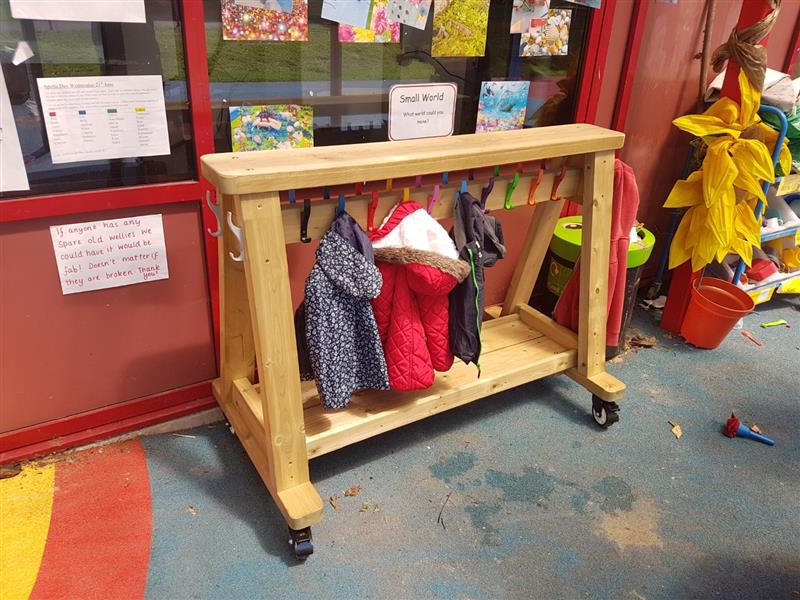
They are handy for playtimes too, and because they are on wheels they are great for teachers to move around wherever they are needed.
Good, secure storage, where children can safely leave their bikes and scooters during the school day, means parents won’t be put off by the idea of having to drag bikes or scooters around with them after children have been dropped off.
Installing a Cycle Shelter or similar Playground Storage on your school grounds is straightforward and will really take the pressure off the roads and parking spaces.
View our full range of Outdoor Classrooms and our Playground Furniture and Storage.
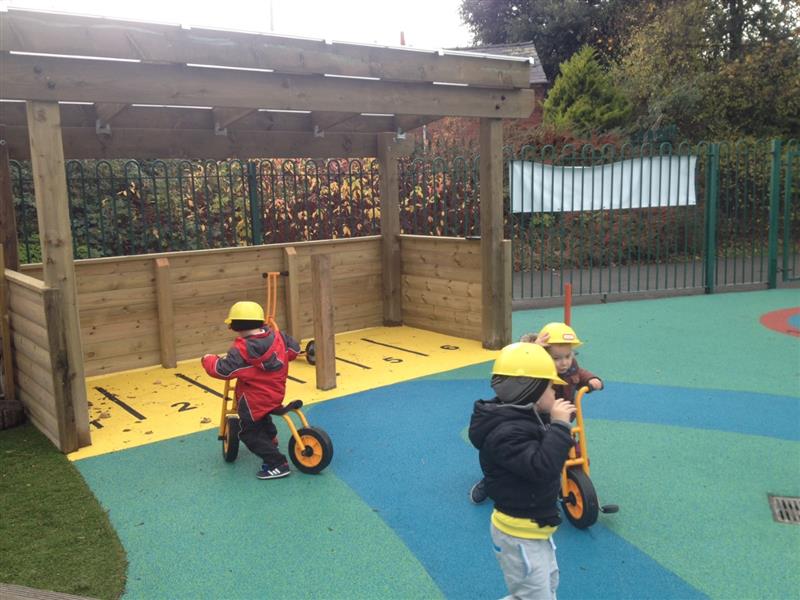
Wonderful Walking Challenges
Get children enthused, encourage and promote walking to school by setting some fun, interesting and educational challenges for them to complete weekly.
You can even incorporate homework and curriculum subjects into it - learning on the move is always much more memorable!
Observing children walking to school, it’s clear that they notice, pay attention to and take pleasure from their surroundings.
They engage with and learn about the world around them, so it’s really important that we make this a priority activity for them.

Provide observation sheets for children to fill in and bring to school at the end of the week.
EYFS children will love counting the number of cyclists, snails, birds, red cars, green traffic lights, dogs, buses (anything you can think of!) they see along the way, and keeping a tally chart.
KS1 and KS2 children could record their weekly number of steps with pedometers and plot their results.
What about a Walk Around the World or Climb a Mountain challenge, where between they have to try and cover the same distance as the length of the chosen mountain or country? Give out stickers and certificates to maintain momentum and reward their achievements.
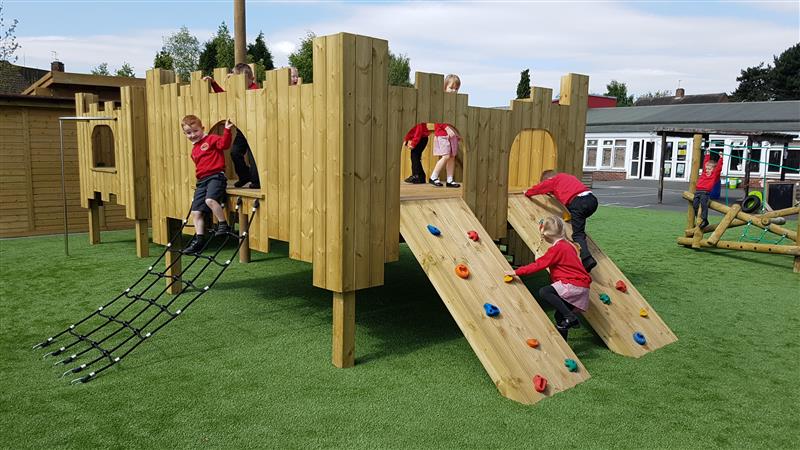
Keeping the Roots from the Routes
Regular inspection of footpaths and walkways around the school is important.
Routes that are free from litter and dog mess and that haven’t become overgrown with nettles and brambles make walking to school much safer and a much more practical and pleasant experience.
Product Spotlight
Children can put their art and design skills to the test, designing posters to display near the school asking people to be considerate and keep the pavements and pathways clean, and to support the children in their wish to walk to school reducing traffic congestion.
Friendly neighbours are bound to be appreciative of this and might even help to patrol the pavements for litterbugs!
If you have supportive parents, a team of volunteers may be willing to get together and take on responsibility for liaising with the local council about keeping streets and pathways child-friendly.
In some areas, additional lighting, better fencing and pedestrian crossings will really make a difference as to how safe and feasible it is for people to get walking to school.
Anyone with gardening tools is entitled to cut badly overgrown nettles and brambles back if teams want to take action themselves.
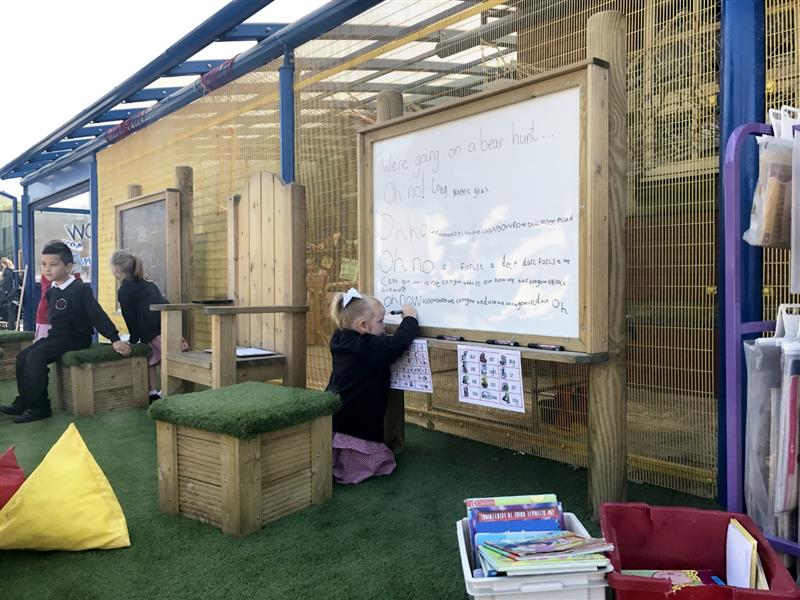
Daily Walking in the School Grounds
Of course it’s not only about the school run. Walking is a brilliant, inclusive, physical activity that should be enjoyed by all children at various times throughout the school day.
Appropriate surfacing and landscaping makes all the difference. Walkways that are safe, even and accessible to wheelchair users or those with walking difficulties mean that everyone can get involved.
Different textures of all-weather surfacing ensure that walking can be enjoyed within your school grounds all year round.
Areas that are usually rendered useless for much of the year due to mud and waterlogging can become super spaces for walking and running alike.
Daily Mile Tracks are becoming increasingly popular, plotting a course around the school grounds to encourage children to walk or run a mile around the school on a daily basis, at any time of year.
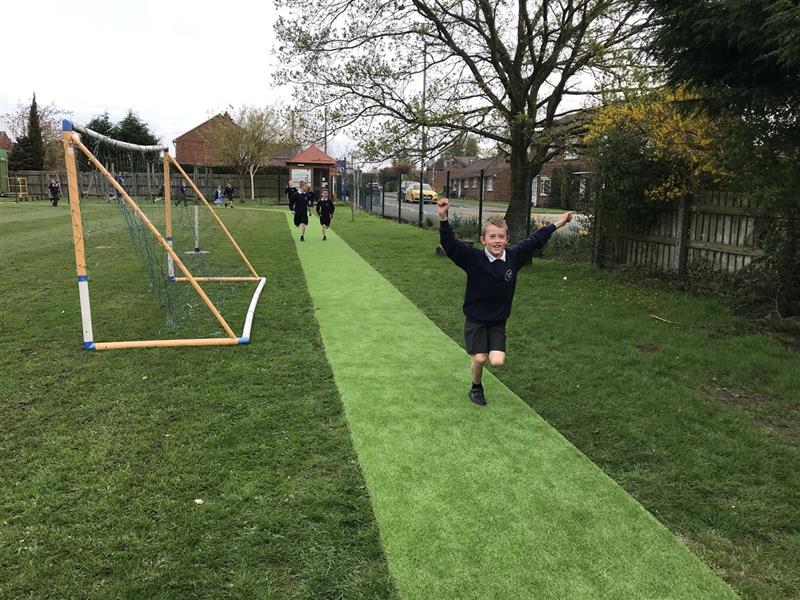
You can even create points of interest with fun and educational playground markings to lead children in different directions.
Sensory walkways, with winding pathways centred around an array of beautiful textured and colourful plants, contained in wooden Planters set at different heights for children of all ages and abilities to discover, will transform any corner of the school grounds into a young walker’s paradise.
We wish you good luck with Walk to School Week and hope that you discover the #MagicOfWalking at your school!
If you are considering making some improvements to your school grounds to facilitate regular walking, we would love to hear from you. We supply and install a wide range of outdoor products for schools. Please do not hesitate to Contact Us for more information or view our full range of Playground Surfacing and Landscaping.




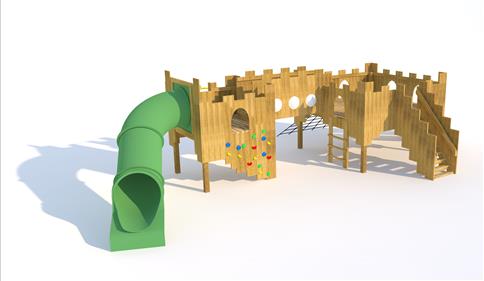
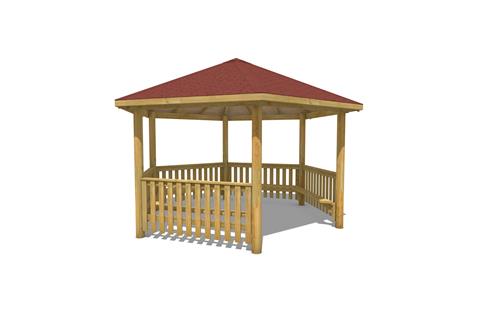
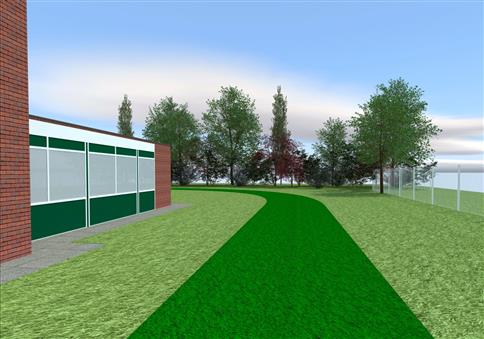


 (Custom).jpg)